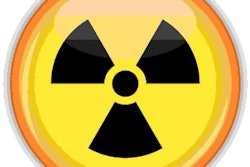Lymphoscintigraphy (LSG) is recommended but seldom used to diagnose lymphedema in real-world settings in the U.S., according to a study published on December 14 the Journal of Vascular Surgery: Venous and Lymphatic Disorders.
The finding comes despite guidelines recommending LSG as the diagnostic test of choice and underlines the need for a better diagnostic test, wrote lead author Tina Moon, MD, of Tufts Medical Center in Boston and colleagues.
“Optimal management of [lymphedema] requires a timely and accurate diagnosis to provide relief of the symptoms of heaviness and aching as well as reducing the risk of infection,” the group wrote.
Lymphedema is a chronic disease of the lymphatic system caused by the accumulation of proteins in the interstitium, ultimately leading to inflammation, and can be caused by damage to the lymphatic system from surgery or radiation treatment, the authors explained. The disease is a particular concern among cancer patients, they noted.
LSG involves the use of an injected radiotracer that targets inflamed lymph nodes, with increased metabolic activity that is then visualized using a SPECT gamma camera. Several recent expert panels have suggested from anecdotal experience that LSG is used infrequently and that the diagnosis of lymphedema is usually based on clinical examination, the team wrote.
Thus, to provide hard evidence of the frequency of its use, the researchers first identified 120,940 patients over the age of 18 from a U.S. insurance database who had a new diagnosis of lymphedema between April 2012 to March 2020. Among these, 57,674 qualified for inclusion in the study.
According to the analysis, only 1,429 (2.5%) of these patients underwent LSG during the study period. Conversely, the most frequently performed study was duplex ultrasound, which was carried out in 50% of all patients.
The frequency of CT scans of the lower extremity was comparable to that of MRI studies of the lower extremity (4.1% and 4.4%), while these imaging studies were less frequently used in the upper extremity, around 1%.
Most importantly, the use of LSG for diagnosis varied with the etiology of the disease, with LSG used to diagnose lymphedema most frequently in patients with melanoma (9.5%) and breast cancer (6.7%) compared to advanced venous disease-related lymphedema (1.1%), the researchers added.
“Despite the recommendations of several guidelines for lymphedema, our real-world results demonstrate that only a minor proportion of patients with [lymphedema] in this healthcare insurance database undergo LSG,” the group wrote.
LSG replaced a more invasive technique called lymphangiography and was first introduced in 1953. It has been considered the “gold standard” for the diagnosis of lymphedema, the authors wrote. Ultimately, however, the study underlines the need for a better, more informative, and simpler diagnostic test for lymphedema to complement clinical examination and to guide therapy, the group suggested.
“Currently several modalities utilizing ultrasound, MRI, [Indocyanine green angiography], and CT have shown promise, but the role of each of these techniques in the diagnosis and management of [lymphedema] remains to be established,” the group concluded.
The full article is available here.




















